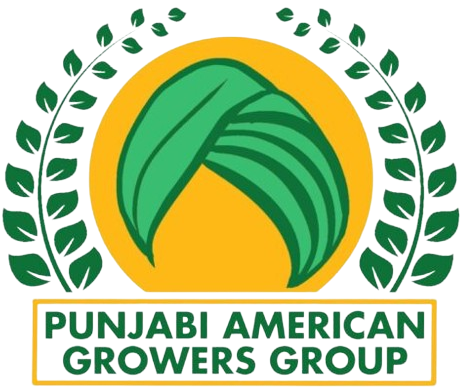Integrated Pest Management for Almonds
- Monitoring-based program to reduce pesticides and water quality issues
- Involvement in orchard by the grower is a must
- 5 different periods of growth:
– Dormant Season
– Bloom to Post-bloom
– Fruit Development
– Harvest
– Postharvest
Integrated Pest Management for Almonds
- Post-harvest: Harvest to onset of dormancy
- Dormancy- Period of time from leaf fall until leaf out in the spring
– December 1st until buds begin to grow, around February 1st, or so. - Delayed Dormancy – Period of time of resumption of growth, indicated by bud swell until green tip.
Post Harvest & Dormant season IPM
- Disease management
- Insect pest management
- Vertebrate pests
- Weed management
Fall monitoring: Almond Rust

- Rust appears as small, yellow spots on the upper surface of leaves.
- On the lower surface, spots are rusty red
- Rust-colored spores erupt through the surface.
Rust Management in Fall
As per UCIPM: Apply zinc sulfate (20-40lb/acre) in late October to early November to hasten leaf fall. Otherwise, the inoculum may build up, overwinter on the trees, and infect leaves the following spring.
Fall monitoring: Shot Hole

- Monitor orchards in fall for shot hole lesions and fruiting structures.
- Appear after rain, seen with hand lens.
- If fruiting structures are present, Apply zinc sulfate (20-40lb/acre) in late October to early November to hasten leaf fall.
Fall monitoring: Armillaria Root Rot
(Oak Root Fungus)

- Mushrooms at the base of trunk after rain events in fall
- White mycelial mats at or below ground
- Fumigation?
- Cultural Management
Dormant Spur Sampling of Almonds
Sampling is used to determine the need for a dormant treatment

- Sampling is done once between mid- November and January
- Extensive and time consuming
- May reduce operating cost
- Removes dormant application of Organophosphates
Dormant Spur Sampling of Almonds

- Insect Pest
– Mite Eggs (Brown, European Red)
– San Jose Scale
– European Fruit Lecanium - Insect Predators
– Parasitized scale
– Parasitized EFL
How to sample
- 35 to 50 trees from each orchard
- Selecting major scaffolds randomly, clip 2 to 3 spurs or twigs from inside the canopy (~total 100)
- Clip the spur off at the base, making sure to include some old spur wood along with last year’s growth
- Using a hand lens, examine 20 of the spurs for scales, mite eggs, and scab lesions, at a time.
Dormant Spur Sampling of Almonds
| Pest | Threshold | Treatment |
| San Jose Scale | Below 20%
20%–60% Over 60% |
No Spray
Oil at 6–8 gals/acre Oil with insect growth regulator |
| European Fruit Lecanium | Below 20%
20% and above |
No spray Oil only |
| Overwintering Mite Eggs (European red or brown mite) | Below 20%
20% and above |
No spray Oil only |
| Scab | Below 10%
10% and above |
No spray Copper/oil or chlorothalonil/oil |
Dormant Spur Sampling of Almonds

Almond Scab
Scab lesions on twigs serve as overwintering sites for the fungus
Mummy nut removal
- Mummy monitoring and nut removal
-
- Examine 20 trees per block.
- If an average of 2 or more mummies per tree are found before February 1, remove mummies by shaking or hand poling the entire block.
- Destroy mummies on the ground by either disking or mowing by March 15.
Pistachios Orchard sanitation
- Sanitation also reduces inoculum for
- Botryosphaeria panicle & shoot blight
- Botrytis blossom & shoot blight
- Overwintering leaffooted bug


- Botryosphaeria panicle & shoot blight
- Severe winter pruning
- Burn the prunings outside the orchard
- Infected wood spreads disease via rain splashes

Killing buds for next year’s crop
Monitoring for diseases

- BUDMON test
- Dormant Bud Sampling
- February to Mid-March
- Specially if pressure was high last year
- Infected parts can spread infection for 6 years
Botrytis blossom & shoot blight

- More severe in male
- Beige/buff colored powdery spores at the base of shoots
- Starts from infected buds and bud scales
- Prune the blighted shoots
Sampling for nematodes
- Now is a good time to sample soil for nematode analysis
- Soil should have optimum moisture
- Make a composite sample from at least 5 locations in the block.
- Discard top one foot of soil and sample from the second foot depth, within the root zone
- Make sure you collect roots along with the soil
Vertebrate pests

Pocket gophers
- Mound building activity peaks in fall & spring
- Crescent shaped mounds at burrow opening

Vole Damage:
- Physical damage to tree and roots at or slightly above/below soil line
- They like grass/vegetation



